Grid-Forming Virtual Power Plants: Concepts, Technologies and Advantages
Abstract
:1. Introduction
2. Virtual Power Plants (VPPs)
2.1. General Overview
2.2. VPP Case Studies
- Participation in the electricity market to provide different services such as energy and ancillary services such as frequency regulation and grid voltage control;
- Provision of operational visibility for better understanding of VPPs’ benefits;
- Enhancement of customer satisfaction and experience;
- Evaluation of the requirement of cyber security.
2.3. Customer Engagement in VPPs
2.4. Gamification
2.5. Costing Components and Objectives for VPPs
2.5.1. VPP Investments
2.5.2. Wholesale Electricity Market Costs
- To promote the economically efficient, safe and reliable generation and supply of electricity and electricity-related services in the interconnected system;
- To stimulate a fair competition among generators and retailers in the grid, including by facilitating efficient entry of new competitors;
- To avoid discrimination in that market against particular energy options and technologies, including renewables options and technologies related to the reduction of overall greenhouse gas emissions;
- To minimise the long-term cost of electricity supplied to customers from grids;
- To manage when and how much electricity is used.
- Purchasing Energy from WEM
- Market fees
- Market Fees, System Management Fees and Regulator Fees;
- Application Fees;
- Reassessment Fee.
- Loss factor
- Individual reserve capacity requirement (IRCR)
- Clean energy regulator and ancillary service fee
2.5.3. Objective Function
- WEM constraints, including minimum and maximum of energy and/or power contribution and their rates at each interval;
- VPP constraints, including generation and energy storage operational and load balancing constraints;
- Consumers’ constraints, including comfort levels and the settings of appliances.
2.6. VPP Bidding Strategies
2.7. Uncertainty Modeling
3. Grid-Forming Inverters
4. Concept of a Grid-Forming VPP
5. Problem Formulation
6. Simulation Results
7. Discussion and Conclusions
- The reactive power demand of a VPP can be completely supplied by smart inverters;
- The profit of a VPP is maximized by selling the surplus power to the main grid;
- The energy storage was charged in intervals when the market price was less and then released in times when the price was high.
- The bidding strategy for VPPs under uncertainties is an open topic which needs to be investigated to reveal how much profit is decreased/increased if uncertain parameters violate their forecasted values;
- Power quality-oriented VPP operation is also another important factor needing further investigation;
- Reliability-based grid-forming VPPs are another important area for further investigation.
Author Contributions
Funding
Data Availability Statement
Acknowledgments
Conflicts of Interest
References
- Olabi, A.; Abdelkareem, M.A. Renewable energy and climate change. Renew. Sustain. Energy Rev. 2022, 158, 112111. [Google Scholar] [CrossRef]
- Wang, W.; Huang, Y.; Yang, M.; Chen, C.; Zhang, Y.; Xu, X. Renewable energy sources planning considering approximate dynamic network reconfiguration and nonlinear correlations of uncertainties in distribution network. Int. J. Electr. Power Energy Syst. 2022, 139, 107791. [Google Scholar] [CrossRef]
- Mozafar, M.R.; Moradi, M.H.; Amini, M.H. A simultaneous approach for optimal allocation of renewable energy sources and electric vehicle charging stations in smart grids based on improved GA-PSO algorithm. Sustain. Cities Soc. 2017, 32, 627–637. [Google Scholar] [CrossRef]
- Jamil, E.; Hameed, S.; Jamil, B.; Qurratulain. Power quality improvement of distribution system with photovoltaic and permanent magnet synchronous generator based renewable energy farm using static synchronous compensator. Sustain. Energy Technol. Assess. 2019, 35, 98–116. [Google Scholar] [CrossRef]
- Jafari, A.; Khalili, T.; Ganjehlou, H.G.; Bidram, A. Optimal integration of renewable energy sources, diesel generators, and demand response program from pollution, financial, and reliability viewpoints: A multi-objective approach. J. Clean. Prod. 2019, 247, 119100. [Google Scholar] [CrossRef]
- Malekpour, A.R.; Pahwa, A. A Dynamic Operational Scheme for Residential PV Smart Inverters. IEEE Trans. Smart Grid 2016, 8, 2258–2267. [Google Scholar] [CrossRef]
- Vahedipour-Dahraie, M.; Rashidizadeh-Kermani, H.; Shafie-Khah, M.; Catalao, J.P.S. Risk-Averse Optimal Energy and Reserve Scheduling for Virtual Power Plants Incorporating Demand Response Programs. IEEE Trans. Smart Grid 2021, 12, 1405–1415. [Google Scholar] [CrossRef]
- Yu, S.; Fang, F.; Liu, Y.; Liu, J. Uncertainties of virtual power plant: Problems and countermeasures. Appl. Energy 2019, 239, 454–470. [Google Scholar] [CrossRef]
- Yavuz, L.; Önen, A.; Muyeen, S.; Kamwa, I. Transformation of microgrid to virtual power plant–a comprehensive review. IET Gener. Transm. Distrib. 2019, 13, 1994–2005. [Google Scholar] [CrossRef]
- Zhang, G.; Jiang, C.; Wang, X. Comprehensive Review on Structure and Operation of Virtual Power Plant in Electrical System; Comprehensive Review on Structure and Operation of Virtual Power Plant in Electrical System. IET Gener. Transm. Distrib. 2018, 13, 145–156. [Google Scholar] [CrossRef]
- Moreno, B.; Díaz, G. The impact of virtual power plant technology composition on wholesale electricity prices: A comparative study of some European Union electricity markets. Renew. Sustain. Energy Rev. 2018, 99, 100–108. [Google Scholar] [CrossRef]
- Sikorski, T.; Jasiński, M.; Ropuszyńska-Surma, E.; Węglarz, M.; Kaczorowska, D.; Kostyla, P.; Leonowicz, Z.; Lis, R.; Rezmer, J.; Rojewski, W.; et al. A Case Study on Distributed Energy Resources and Energy-Storage Systems in a Virtual Power Plant Concept: Technical Aspects. Energies 2020, 13, 3086. [Google Scholar] [CrossRef]
- CER 2020 Large-Scale Renewable Energy Target Capacity Achieved. Available online: http://www.cleanenergyregulator.gov.au/RET/Pages/News and updates/NewsItem.aspx?ListId=19b4efbb-6f5d-4637-94c4-121c1f96fcfe&ItemId=683 (accessed on 4 September 2019).
- COAG Renewable Energy Target Scheme Design. Available online: https://www.coag.gov.au/node/219 (accessed on 29 June 2022).
- Dulau, L.I.; Abrudean, M.; Bica, D. Distributed Generation and Virtual Power Plants. In Proceedings of the Universities Power Engineering Conference; IEEE Computer Society, Cluj-Napoca, Romania, 2–5 September 2014. [Google Scholar]
- Ghavidel, S.; Li, L.; Aghaei, J.; Yu, T.; Zhu, J. A Review on the Virtual Power Plant: Components and Operation Systems. In Proceedings of the 2016 IEEE International Conference on Power System Technology, Powercon 2016, Wollongong, NSW, Australia, 28 September–1 October 2016; pp. 1–6. [Google Scholar]
- Abdolrasol, M.G.M.; Hannan, M.A.; Mohamed, A.; Amiruldin, U.A.U.; Abidin, I.B.Z.; Uddin, M.N. An Optimal Scheduling Controller for Virtual Power Plant and Microgrid Integration Using the Binary Backtracking Search Algorithm. IEEE Trans. Ind. Appl. 2018, 54, 2834–2844. [Google Scholar] [CrossRef]
- Behi, B.; Jennings, P.; Arefi, A.; Pivrikas, A. Bidding Strategy for a Virtual Power Plant for Trading Energy in the Wholesale Electricity Market-Murdoch University Research Repository. Available online: https://researchrepository.murdoch.edu.au/id/eprint/65657/ (accessed on 21 November 2022).
- Li, Y.; Gao, W.; Ruan, Y. Feasibility of virtual power plants (VPPs) and its efficiency assessment through benefiting both the supply and demand sides in Chongming country, China. Sustain. Cities Soc. 2017, 35, 544–551. [Google Scholar] [CrossRef]
- Wang, H.; Riaz, S.; Mancarella, P. Integrated techno-economic modeling, flexibility analysis, and business case assessment of an urban virtual power plant with multi-market co-optimization. Appl. Energy 2019, 259, 114142. [Google Scholar] [CrossRef]
- Lehmbruck, L.; Kretz, J.; Aengenvoort, J.; Sioshansi, F. Aggregation of Front-and behind-the-Meter: The Evolving VPP Business Model. In Behind and beyond the Meter: Digitalization, Aggregation, Optimization, Monetization; Sioshansi, F., Ed.; Academic Press: Cambridge, MA, USA, 2020; pp. 211–232. ISBN 9780128199510. [Google Scholar]
- German virtual power plant project using 25 BlueGen mCHP units. Fuel Cells Bull. 2012, 2012, 4. [CrossRef]
- van Summeren, L.F.; Wieczorek, A.J.; Bombaerts, G.J.; Verbong, G.P. Community energy meets smart grids: Reviewing goals, structure, and roles in Virtual Power Plants in Ireland, Belgium and the Netherlands. Energy Res. Soc. Sci. 2019, 63, 101415. [Google Scholar] [CrossRef]
- Elgamal, A.H.; Kocher-Oberlehner, G.; Robu, V.; Andoni, M. Optimization of a multiple-scale renewable energy-based virtual power plant in the UK. Appl. Energy 2019, 256, 113973. [Google Scholar] [CrossRef]
- Dietrich, K.; Latorre-Canteli, J.M.; Olmos, L.; Ramos, A. Modelling and assessing the impacts of self-supply and market-revenue driven Virtual Power Plants. Electr. Power Syst. Res. 2015, 119, 462–470. [Google Scholar] [CrossRef]
- Parag, Y.; Ainspan, M. Sustainable microgrids: Economic, environmental and social costs and benefits of microgrid deployment. Energy Sustain. Dev. 2019, 52, 72–81. [Google Scholar] [CrossRef]
- Loßner, M.; Böttger, D.; Bruckner, T. Economic assessment of virtual power plants in the German energy market—A scenario-based and model-supported analysis. Energy Econ. 2017, 62, 125–138. [Google Scholar] [CrossRef]
- Magdy, F.E.Z.; Ibrahim, D.K.; SABRY, W. Virtual Power Plants Modeling and Simulation using Innovative Electro-Economical Concept. In Proceedings of the 2019 16th Conference on Electrical Machines, Drives and Power Systems (ELMA), Varna, Bulgaria, 6–8 June 2019; pp. 1–5. [Google Scholar] [CrossRef]
- Veilleux, G.; Potisat, T.; Pezim, D.; Ribback, C.; Ling, J.; Krysztofiński, A.; Ahmed, A.; Papenheim, J.; Pineda, A.M.; Sembian, S.; et al. Techno-economic analysis of microgrid projects for rural electrification: A systematic approach to the redesign of Koh Jik off-grid case study. Energy Sustain. Dev. 2019, 54, 1–13. [Google Scholar] [CrossRef]
- AEMO Virtual Power Plant (VPP) Demonstrations. Available online: https://aemo.com.au/initiatives/major-programs/nem-distributed-energy-resources-der-program/pilots-and-trials/virtual-power-plant-vpp-demonstrations (accessed on 1 February 2022).
- Synergy Schools VPP Pilot Project. Available online: https://www.synergy.net.au/Our-energy/For-tomorrow/Schools-VPP-Pilot-Project (accessed on 1 February 2022).
- Synergy Project Symphony. Available online: https://www.synergy.net.au/Our-energy/For-tomorrow/Project-Symphony (accessed on 30 September 2022).
- AEMO Data Dashboard for Live Market Prices. Available online: https://www.aemo.com.au/Electricity/Wholesale-Electricity-Market-WEM/Data-dashboard(live) (accessed on 24 November 2022).
- AlSkaif, T.; Lampropoulos, I.; Broek, M.V.D.; van Sark, W. Gamification-based framework for engagement of residential customers in energy applications. Energy Res. Soc. Sci. 2018, 44, 187–195. [Google Scholar] [CrossRef]
- Hadayeghparast, S.; Farsangi, A.S.; Shayanfar, H. Day-ahead stochastic multi-objective economic/emission operational scheduling of a large scale virtual power plant. Energy 2019, 172, 630–646. [Google Scholar] [CrossRef]
- Al-Awami, A.T.; Amleh, N.A.; Muqbel, A.M. Optimal Demand Response Bidding and Pricing Mechanism with Fuzzy Optimization: Application for a Virtual Power Plant. IEEE Trans. Ind. Appl. 2017, 53, 5051–5061. [Google Scholar] [CrossRef]
- Farsangi, A.S.; Hadayeghparast, S.; Mehdinejad, M.; Shayanfar, H. A novel stochastic energy management of a microgrid with various types of distributed energy resources in presence of demand response programs. Energy 2018, 160, 257–274. [Google Scholar] [CrossRef]
- Raoofat, M.; Saad, M.; Lefebvre, S.; Asber, D.; Mehrjedri, H.; Lenoir, L. Wind power smoothing using demand response of electric vehicles. Int. J. Electr. Power Energy Syst. 2018, 99, 164–174. [Google Scholar] [CrossRef]
- Nguyen, H.T.; Le, L.B.; Wang, Z. A Bidding Strategy for Virtual Power Plants with the Intraday Demand Response Exchange Market Using the Stochastic Programming. IEEE Trans. Ind. Appl. 2018, 54, 3044–3055. [Google Scholar] [CrossRef]
- Tang, W.-J.; Yang, H.-T. Optimal Operation and Bidding Strategy of a Virtual Power Plant Integrated with Energy Storage Systems and Elasticity Demand Response. IEEE Access 2019, 7, 79798–79809. [Google Scholar] [CrossRef]
- Dabbagh, S.R.; Sheikh-El-Eslami, M.K. Participation of Demand Response Resources through Virtual Power Plant: A Decision Framework under Uncertainty. In Proceedings of the 2015 IEEE 15th International Conference on Environment and Electrical Engineering (EEEIC), Rome, Italy, 10–13 June 2015; pp. 2045–2049. [Google Scholar]
- Nosratabadi, S.M.; Hooshmand, R.-A.; Gholipour, E. Stochastic profit-based scheduling of industrial virtual power plant using the best demand response strategy. Appl. Energy 2016, 164, 590–606. [Google Scholar] [CrossRef]
- Royapoor, M.; Pazhoohesh, M.; Davison, P.J.; Patsios, C.; Walker, S. Building as a virtual power plant, magnitude and persistence of deferrable loads and human comfort implications. Energy Build. 2020, 213, 109794. [Google Scholar] [CrossRef]
- Arefi, A.; Abeygunawardana, A.; Ledwich, G. A New Risk-Managed Planning of Electric Distribution Network Incorporating Customer Engagement and Temporary Solutions. IEEE Trans. Sustain. Energy 2016, 7, 1646–1661. [Google Scholar] [CrossRef] [Green Version]
- Liang, H.; Ma, J. Data-Driven Resource Planning for Virtual Power Plant Integrating Demand Response Customer Selection and Storage. IEEE Trans. Ind. Inform. 2021, 18, 1833–1844. [Google Scholar] [CrossRef]
- Wang, Y.; Ai, X.; Tan, Z.; Yan, L.; Liu, S. Interactive Dispatch Modes and Bidding Strategy of Multiple Virtual Power Plants Based on Demand Response and Game Theory. IEEE Trans. Smart Grid 2015, 7, 510–519. [Google Scholar] [CrossRef]
- Albertarelli, S.; Fraternali, P.; Herrera, S.; Melenhorst, M.; Novak, J.; Pasini, C.; Rizzoli, A.-E.; Rottondi, C. A Survey on the Design of Gamified Systems for Energy and Water Sustainability. Games 2018, 9, 38. [Google Scholar] [CrossRef] [Green Version]
- Peham, G.; Michalczuk, R.M.B. The ecoGator App: Gamification for Enhanced Energy Efficiency in Europe. In Proceedings of the Second International Conference on Technological Ecosystems for Enhancing Multiculturality, Salamanca, Spain, 1 October 2014; ACM: New York, NY, USA; pp. 179–183. [Google Scholar]
- Lee, Y.; Brewer, R.S.; Johnson, P.M. Makahiki: An Open Source Game Engine for Energy Education and Conservation; Department of Information and Computer Sciences, University of Hawaii: Honolulu, HI, USA, 2012. [Google Scholar]
- Reeves, B.; Cummings, J.J.; Scarborough, J.K.; Flora, J.; Anderson, D. Leveraging the Engagement of Games to Change Energy Behavior. In Proceedings of the 2012 International Conference on Collaboration Technologies and Systems (CTS), Denver, CO, USA, 21–25 May 2012; IEEE: Piscataway, NJ, USA, 2012; pp. 354–358. [Google Scholar]
- Madeira, R.N.; Silva, A.; Santos, C.; Teixeira, B.; Romão, T.; Dias, E.; Correia, N. LEY!: Persuasive Pervasive Gaming on Domestic Energy Consumption-Awareness. In Proceedings of the 8th International Conference on Advances in Computer Entertainment Technology, Lisbon, Portugal, 8 November 2011; ACM: New York, NY, USA, 2011; p. 72. [Google Scholar]
- Foster, D.; Blythe, M.; Cairns, P. Wattsup?: Motivating Reductions in Domestic Energy Consumption Using Social Networks. In Proceedings of the 6th Nordic Conference on Human-Computer Interaction: Extending Boundaries, Reykjavik, Iceland, 16 October 2010; ACM: New York, NY, USA, 2010; pp. 178–187. [Google Scholar]
- Fraternali, S.; Novak, J.; Melenhorst, M.; Tzovaras, D.; Krinidis, S.; Rizzoli, A.E.; Rottondi, C.; Cellina, F. enCOMPASS—An Integrative Approach to Behavioural Change for Energy Saving. In Proceedings of the 2017 Global Internet of Things Summit (GIoTS), Geneva, Switzerland, 6 June 2017; IEEE: Piscataway, NJ, USA, 2017; pp. 1–6. [Google Scholar]
- Fraternali, P.; Cellina, F.; Herrera, S.; Krinidis, S.; Pasini, C.; Rizzoli, A.E.; Rottondi, C.; Tzovaras, D. A Socio-Technical System Based on Gamification Towards Energy Savings. In Proceedings of the 2018 IEEE International Conference on Pervasive Computing and Communications Workshops (PerCom Workshops), Athens, Greece, 19–23 March 2018; pp. 59–64. [Google Scholar]
- Morais, H.; Kadar, P.; Cardoso, M.; Vale, Z.A.; Khodr, H. VPP Operating in the Isolated Grid. In Proceedings of the 2008 IEEE Power and Energy Society General Meeting-Conversion and Delivery of Electrical Energy in the 21st Century, Pittsburgh, PA, USA, 20–24 July 2008; pp. 1–6. [Google Scholar]
- ARENA. ARENA’s Virtual Power Plant Knowledge Sharing Workshop Summary. Available online: https://arena.gov.au/assets/2019/04/virtual-power-plant-knowledge-sharing-workshop-summary.pdf (accessed on 1 March 2019).
- Government, W.A. Wholesale Electricity Market Rules. Available online: https://www.wa.gov.au/government/document-collections/wholesale-electricity-market-rules (accessed on 1 September 2022).
- Western Power 2017/18 Loss Factor Report. Available online: https://www.aemo.com.au/-/media/Files/Electricity/WEM/Data/Loss-Factors/2017/2017-18-Loss-Factor-Report.pdf (accessed on 18 June 2017).
- Lewis, E.; Chamel, O.; Mohsenin, M.; Ots, E.; White, E.T. Renewable Energy Certificates. Available online: https://www.solaraccreditation.com.au/consumers/purchasing-your-solar-pv-system/government-schemes/renewable-energy-certificates.html (accessed on 25 October 2022).
- Saboori, H.; Mohammadi, M.; Taghe, R. Virtual Power Plant (VPP), Definition, Concept, Components and Types. In Proceedings of the Asia-Pacific Power and Energy Engineering Conference, APPEEC, Wuhan, China, 25–28 March 2011; pp. 1–4. [Google Scholar]
- El Bakari, K.; Kling, W.L. Virtual Power Plants: An Answer to Increasing Distributed Generation. In Proceedings of the IEEE PES Innovative Smart Grid Technologies Conference Europe, ISGT Europe, Gothenburg, Sweden, 11–13 October 2010; pp. 1–6. [Google Scholar]
- AEMO. Australian Energy Market Operator. Available online: https://aemo.com.au/en (accessed on 4 July 2022).
- Luo, F.; Dong, Z.Y.; Meng, K.; Qiu, J.; Yang, J.; Wong, K.P. Short-term operational planning framework for virtual power plants with high renewable penetrations. IET Renew. Power Gener. 2016, 10, 623–633. [Google Scholar] [CrossRef]
- Mashhour, E.; Moghaddas-Tafreshi, S.M. Bidding Strategy of Virtual Power Plant for Participating in Energy and Spinning Reserve Markets—Part II: Numerical Analysis. IEEE Trans. Power Syst. 2010, 26, 957–964. [Google Scholar] [CrossRef]
- Behi, B.; Arefi, A.; Jennings, P.; Gorjy, A.; Pivrikas, A. Advanced Monitoring and Control System for Virtual Power Plants for Enabling Customer Engagement and Market Participation. Energies 2021, 14, 1113. [Google Scholar] [CrossRef]
- Nezamabadi, H.; Nazar, M.S. Arbitrage strategy of virtual power plants in energy, spinning reserve and reactive power markets. IET Gener. Transm. Distrib. 2016, 10, 750–763. [Google Scholar] [CrossRef]
- Lv, M.; Lou, S.; Liu, B.; Fan, Z.; Wu, Z. Review on Power Generation and Bidding Optimization of Virtual Power Plant. In Proceedings of the Proceedings-2017 International Conference on Electrical Engineering and Informatics: Advancing Knowledge, Research, and Technology for Humanity, Banda Aceh, Indonesia, 18–20 October 2017; pp. 66–71. [Google Scholar]
- Papavasiliou, A.; Oren, S.S.; O'Neill, R.P. Reserve Requirements for Wind Power Integration: A Scenario-Based Stochastic Programming Framework. IEEE Trans. Power Syst. 2011, 26, 2197–2206. [Google Scholar] [CrossRef] [Green Version]
- Ansari, M.; Al-Awami, A.T.; Sortomme, E.; Abido, M.A. Coordinated bidding of ancillary services for vehicle-to-grid using fuzzy optimization. IEEE Trans. Smart Grid. 2014, 6, 261–270. [Google Scholar] [CrossRef]
- Pandžić, H.; Kuzle, I.; Capuder, T. Virtual power plant mid-term dispatch optimization. Appl. Energy 2013, 101, 134–141. [Google Scholar] [CrossRef]
- Liu, Y.; Li, M.; Lian, H.; Tang, X.; Liu, C.; Jiang, C. Optimal dispatch of virtual power plant using interval and deterministic combined optimization. Int. J. Electr. Power Energy Syst. 2018, 102, 235–244. [Google Scholar] [CrossRef]
- Kazempour, J.; Hobbs, B.F. Value of Flexible Resources, Virtual Bidding, and Self-Scheduling in Two-Settlement Electricity Markets with Wind Generation—Part I: Principles and Competitive Model. IEEE Trans. Power Syst. 2017, 33, 749–759. [Google Scholar] [CrossRef] [Green Version]
- Moghaddam, S.Z.; Akbari, T. Network-constrained optimal bidding strategy of a plug-in electric vehicle aggregator: A stochastic/robust game theoretic approach. Energy 2018, 151, 478–489. [Google Scholar] [CrossRef]
- Zheming, L.; Guo, Y. Robust Optimization Based Bidding Strategy for Virtual Power Plants in Electricity Markets. In Proceedings of the IEEE Power and Energy Society General Meeting, Boston, MA, USA, 17–21 July 2016; Volume 2016, pp. 1–5. [Google Scholar]
- Su, C.; Chung, H.; Wei, C.; Wen, C. Optimal VPP Operation Strategy in Liberalized Electricity Markets. In Proceedings of the 2015 IEEE 15th International Conference on Environment and Electrical Engineering (EEEIC), Rome, Italy, 10–13 June 2015; pp. 478–481. [Google Scholar]
- Rahimiyan, M.; Baringo, L. Strategic Bidding for a Virtual Power Plant in the Day-Ahead and Real-Time Markets: A Price-Taker Robust Optimization Approach. IEEE Trans. Power Syst. 2015, 31, 2676–2687. [Google Scholar] [CrossRef]
- Lazaroiu, G.C.; Dumbrava, V.; Roscia, M.; Zaninelli, D. Energy Trading Optimization of a Virtual Power Plant on Electricity Market. In Proceedings of the 2015 9th International Symposium on Advanced Topics in Electrical Engineering, Bucharest, Romania, 7–9 May 2015; ATEE: Bucharest, Romania; pp. 911–916. [Google Scholar]
- Salmani, M.A.; Tafreshi, S.M.M.; Salmani, H. Operation Optimization for a Virtual Power Plant. In Proceedings of the 1st IEEE-PES/IAS Conference on Sustainable Alternative Energy, SAE 2009–Proceedings, Valencia, Spain, 28–30 September 2009; pp. 1–6. [Google Scholar]
- Rahimi, M.; Ardakani, F.J.; Olatujoye, O.; Ardakani, A.J. Two-stage interval scheduling of virtual power plant in day-ahead and real-time markets considering compressed air energy storage wind turbine. J. Energy Storage 2021, 45, 103599. [Google Scholar] [CrossRef]
- Liu, H.; Qiu, J.; Zhao, J. A data-driven scheduling model of virtual power plant using Wasserstein distributionally robust optimization. Int. J. Electr. Power Energy Syst. 2021, 137, 107801. [Google Scholar] [CrossRef]
- Yan, Q.; Zhang, M.; Lin, H.; Li, W. Two-stage adjustable robust optimal dispatching model for multi-energy virtual power plant considering multiple uncertainties and carbon trading. J. Clean. Prod. 2022, 336, 130400. [Google Scholar] [CrossRef]
- Skarvelis-Kazakos, S. Automating Virtual Power Plant Decision Making with Fuzzy Logic and Human Psychology. In Proceedings of the 53rd International Universities Power Engineering Conference, UPEC, Glasgow, UK, 4–7 September 2018; pp. 1–6. [Google Scholar]
- Srivastava, A.K.; Latif, A.; Shaoo, S.C.; Das, D.C.; Hussain, S.S.; Ustun, T.S. Analysis of GOA optimized two-stage controller for frequency regulation of grid integrated virtual power plant. Energy Rep. 2021, 8, 493–500. [Google Scholar] [CrossRef]
- AEMO. Wholesale Electricity Market Rules. Available online: https://www.erawa.com.au/cproot/20012/2/Wholesale Electricity Market Rules 11 January 2019.pdf (accessed on 11 January 2019).
- Yang, H.; Zhang, S.; Qiu, J.; Qiu, D.; Lai, M.; Dong, Z. CVaR-Constrained Optimal Bidding of Electric Vehicle Aggregators in Day-Ahead and Real-Time Markets. IEEE Trans. Ind. Inform. 2017, 13, 2555–2565. [Google Scholar] [CrossRef]
- Baringo, A.; Baringo, L.; Arroyo, J.M. Day-Ahead Self-Scheduling of a Virtual Power Plant in Energy and Reserve Electricity Markets Under Uncertainty. IEEE Trans. Power Syst. 2018, 34, 1881–1894. [Google Scholar] [CrossRef]
- Fan, S.; Ai, Q. Day-Ahead Scheduling Strategy of Virtual Power Plant under Uncertainties. In Proceedings of the 2015 IEEE PES Asia-Pacific Power and Energy Engineering Conference (APPEEC), Brisbane, QLD, Australia, 15–18 November 2015; pp. 1–5. [Google Scholar]
- Vaya, M.G.; Andersson, G. Optimal Bidding Strategy of a Plug-In Electric Vehicle Aggregator in Day-Ahead Electricity Markets Under Uncertainty. IEEE Trans. Power Syst. 2014, 30, 2375–2385. [Google Scholar] [CrossRef]
- Gholami, K.; Karimi, S.; Anvari-Moghaddam, A. Multi-objective Stochastic Planning of Electric Vehicle Charging Stations in Unbalanced Distribution Networks Supported by Smart Photovoltaic Inverters. Sustain. Cities Soc. 2022, 84, 104029. [Google Scholar] [CrossRef]
- Gush, T.; Kim, C.-H.; Admasie, S.; Kim, J.-S.; Song, J.-S. Optimal Smart Inverter Control for PV and BESS to Improve PV Hosting Capacity of Distribution Networks Using Slime Mould Algorithm. IEEE Access 2021, 9, 52164–52176. [Google Scholar] [CrossRef]
- Zarei, S.F.; Mokhtari, H.; Ghasemi, M.A.; Peyghami, S.; Davari, P.; Blaabjerg, F. Control of Grid-Following Inverters Under Unbalanced Grid Conditions. IEEE Trans. Energy Convers. 2019, 35, 184–192. [Google Scholar] [CrossRef]
- Bikdeli, E.; Islam, R.; Rahman, M.; Muttaqi, K.M. State of the Art of the Techniques for Grid Forming Inverters to Solve the Challenges of Renewable Rich Power Grids. Energies 2022, 15, 1879. [Google Scholar] [CrossRef]
- Song, G.; Cao, B.; Chang, L. Review of Grid-forming Inverters in Support of Power System Operation. Chin. J. Electr. Eng. 2022, 8, 1–15. [Google Scholar] [CrossRef]
- Gawhade, P.; Ojha, A. Recent advances in synchronization techniques for grid-tied PV system: A review. Energy Rep. 2021, 7, 6581–6599. [Google Scholar] [CrossRef]
- Mahery, H.M.; Babaei, E. Mathematical modeling of buck–boost dc–dc converter and investigation of converter elements on transient and steady state responses. Int. J. Electr. Power Energy Syst. 2013, 44, 949–963. [Google Scholar] [CrossRef]
- Scarabelot, L.T.; Rambo, C.R.; Rampinelli, G. A relative power-based adaptive hybrid model for DC/AC average inverter efficiency of photovoltaics systems. Renew. Sustain. Energy Rev. 2018, 92, 470–477. [Google Scholar] [CrossRef]
- Gholami, K.; Azizivahed, A.; Arefi, A. Risk-oriented energy management strategy for electric vehicle fleets in hybrid AC-DC microgrids. J. Energy Storage 2022, 50, 104258. [Google Scholar] [CrossRef]
- Ghadi, M.J.; Azizivahed, A.; Rajabi, A.; Ghavidel, S.; Li, L.; Zhang, J.; Shafie-Khah, M.; Catalao, J.P.S. Day-Ahead Market Participation of an Active Distribution Network Equipped with Small-Scale CAES Systems. IEEE Trans. Smart Grid 2020, 11, 2966–2979. [Google Scholar] [CrossRef]
- Gholami, K.; Azizivahed, A.; Arefi, A.; Li, L. Risk-Averse Volt-VAr Management Scheme to Coordinate Distributed Energy Resources with Demand Response Program. Int. J. Electr. Power Energy Syst. 2023, 146, 108761. [Google Scholar] [CrossRef]
- Fu, X.; Sun, J.; Huang, M.; Tian, Z.; Yan, H.; Iu, H.H.-C.; Hu, P.; Zha, X. Large-Signal Stability of Grid-Forming and Grid-Following Controls in Voltage Source Converter: A Comparative Study. IEEE Trans. Power Electron. 2020, 36, 7832–7840. [Google Scholar] [CrossRef]
- Zhang, H.; Xiang, W.; Lin, W.; Wen, J. Grid Forming Converters in Renewable Energy Sources Dominated Power Grid: Control Strategy, Stability, Application, and Challenges. J. Mod. Power Syst. Clean Energy 2021, 9, 1239–1256. [Google Scholar] [CrossRef]
- Pan, D.; Wang, X.; Liu, F.; Shi, R. Transient Stability of Voltage-Source Converters with Grid-Forming Control: A Design-Oriented Study. IEEE J. Emerg. Sel. Top. Power Electron. 2019, 8, 1019–1033. [Google Scholar] [CrossRef]
- Khan, S.A.; Wang, M.; Su, W.; Liu, G.; Chaturvedi, S. Grid-Forming Converters for Stability Issues in Future Power Grids. Energies 2022, 15, 4937. [Google Scholar] [CrossRef]
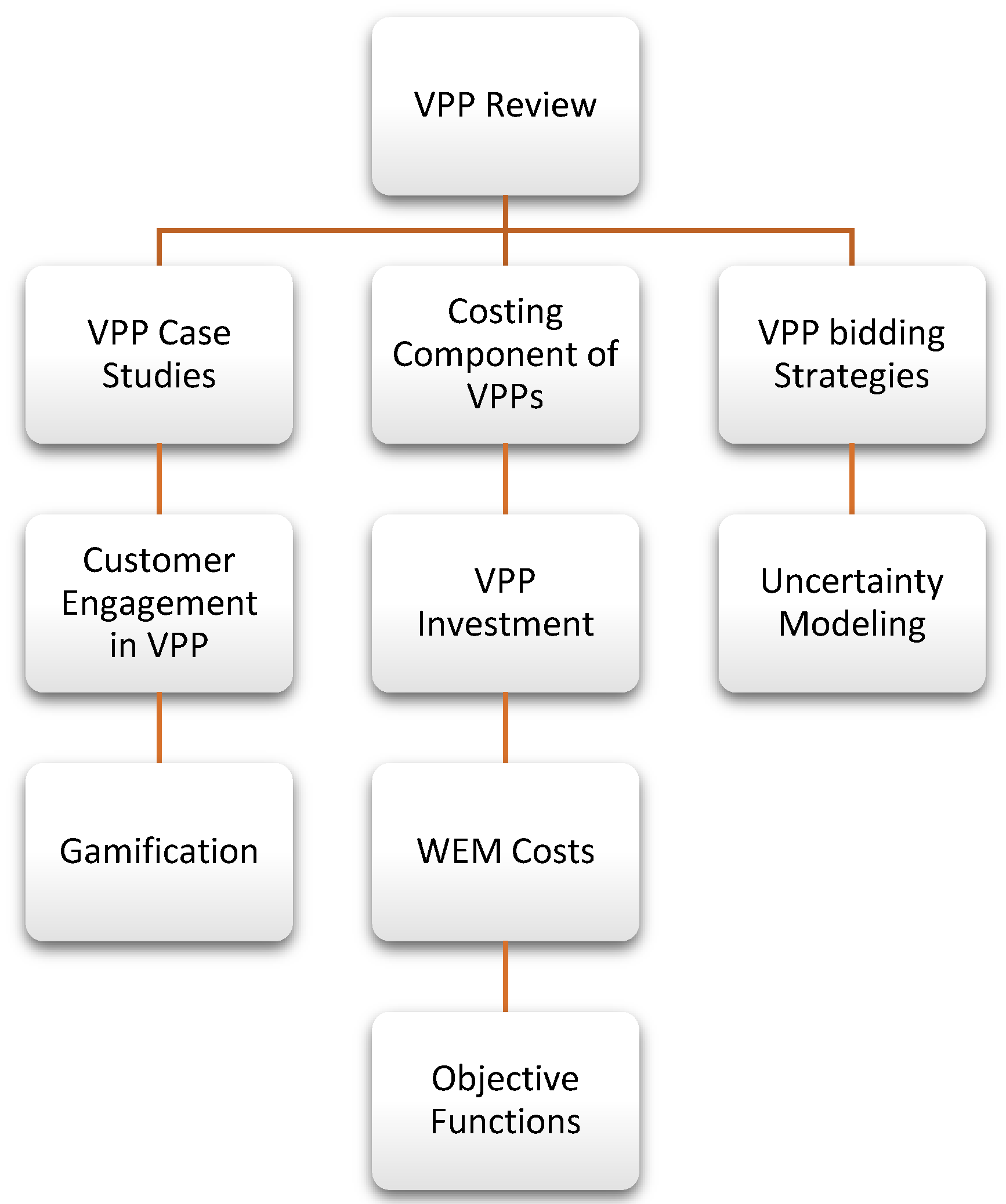
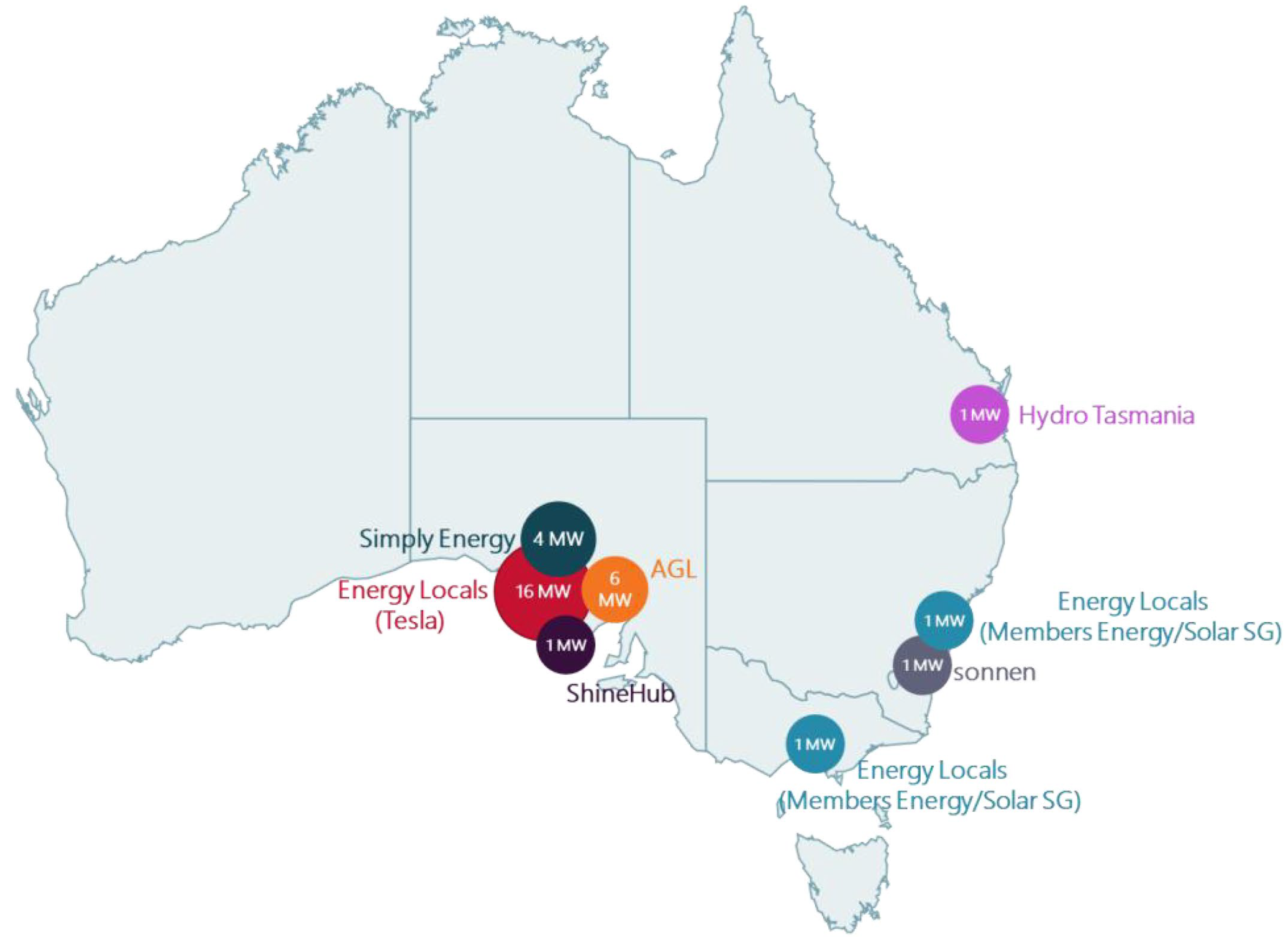







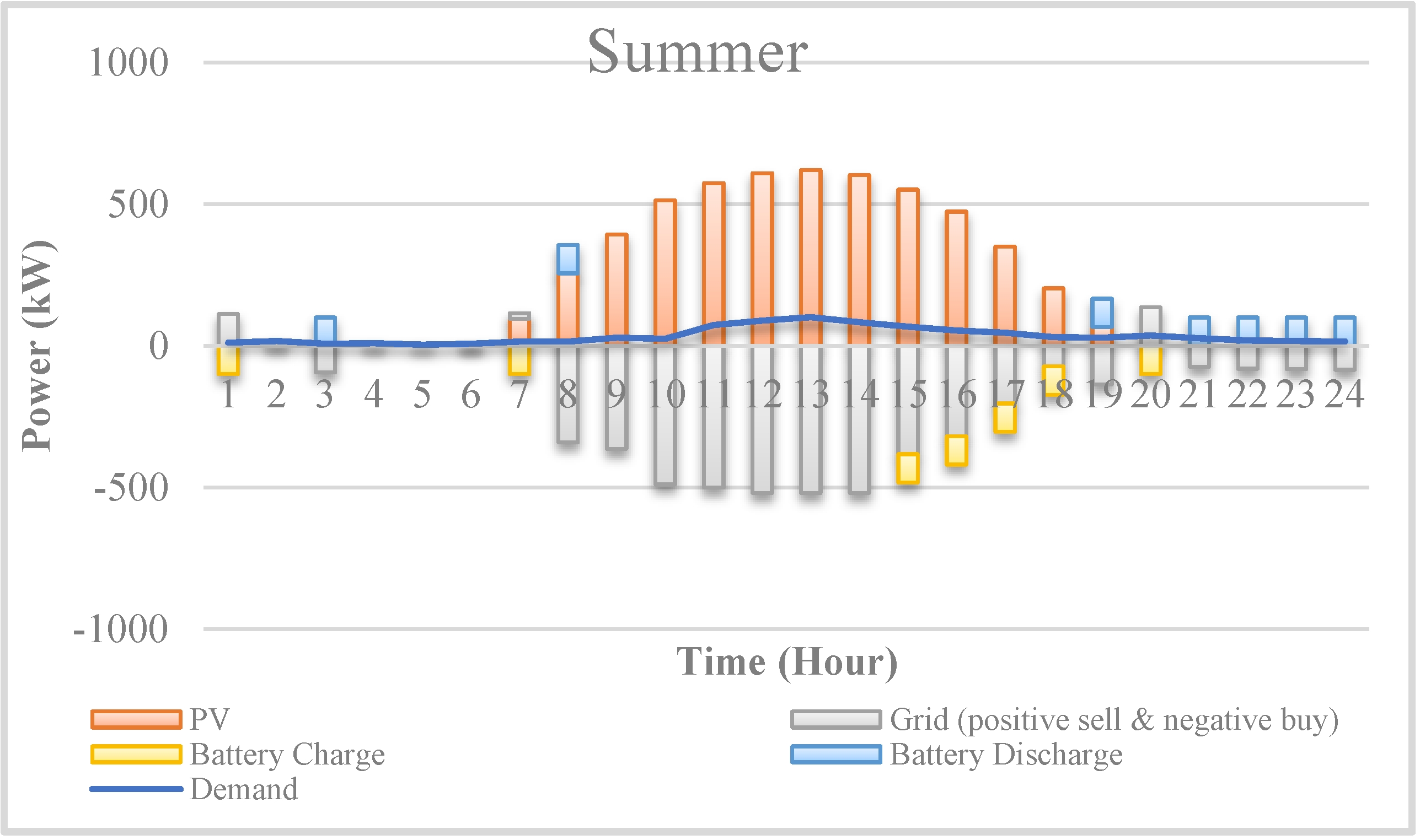
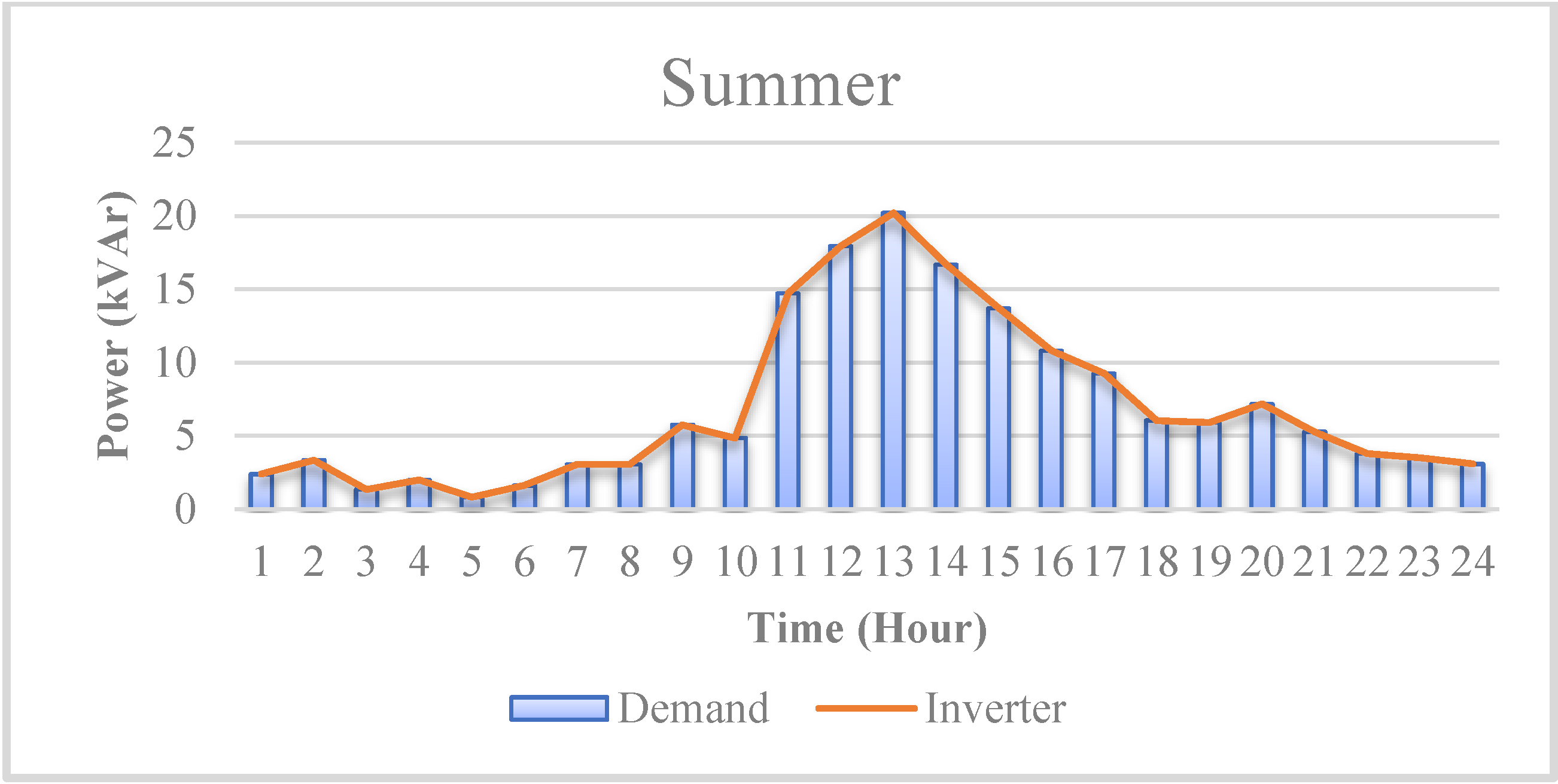

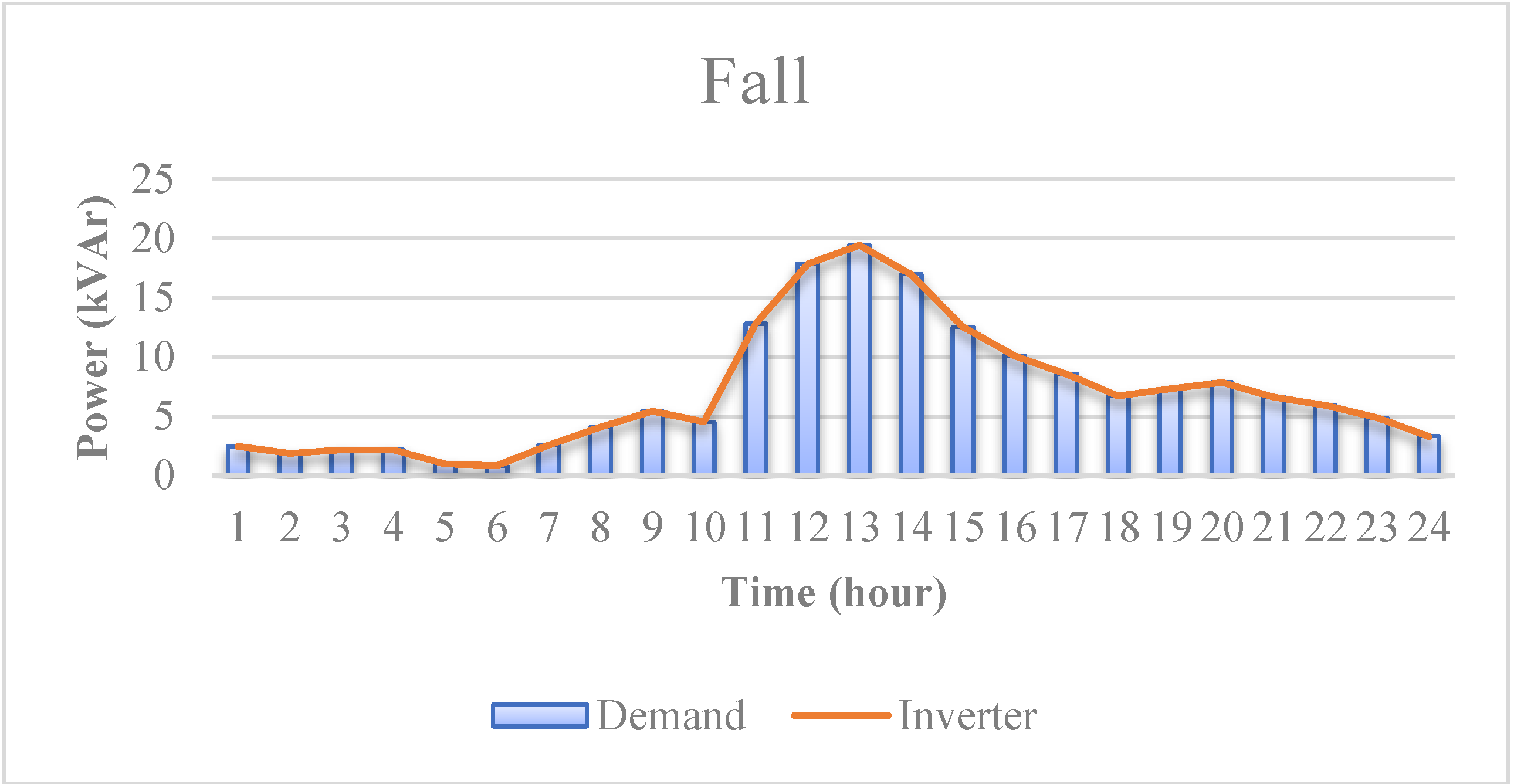

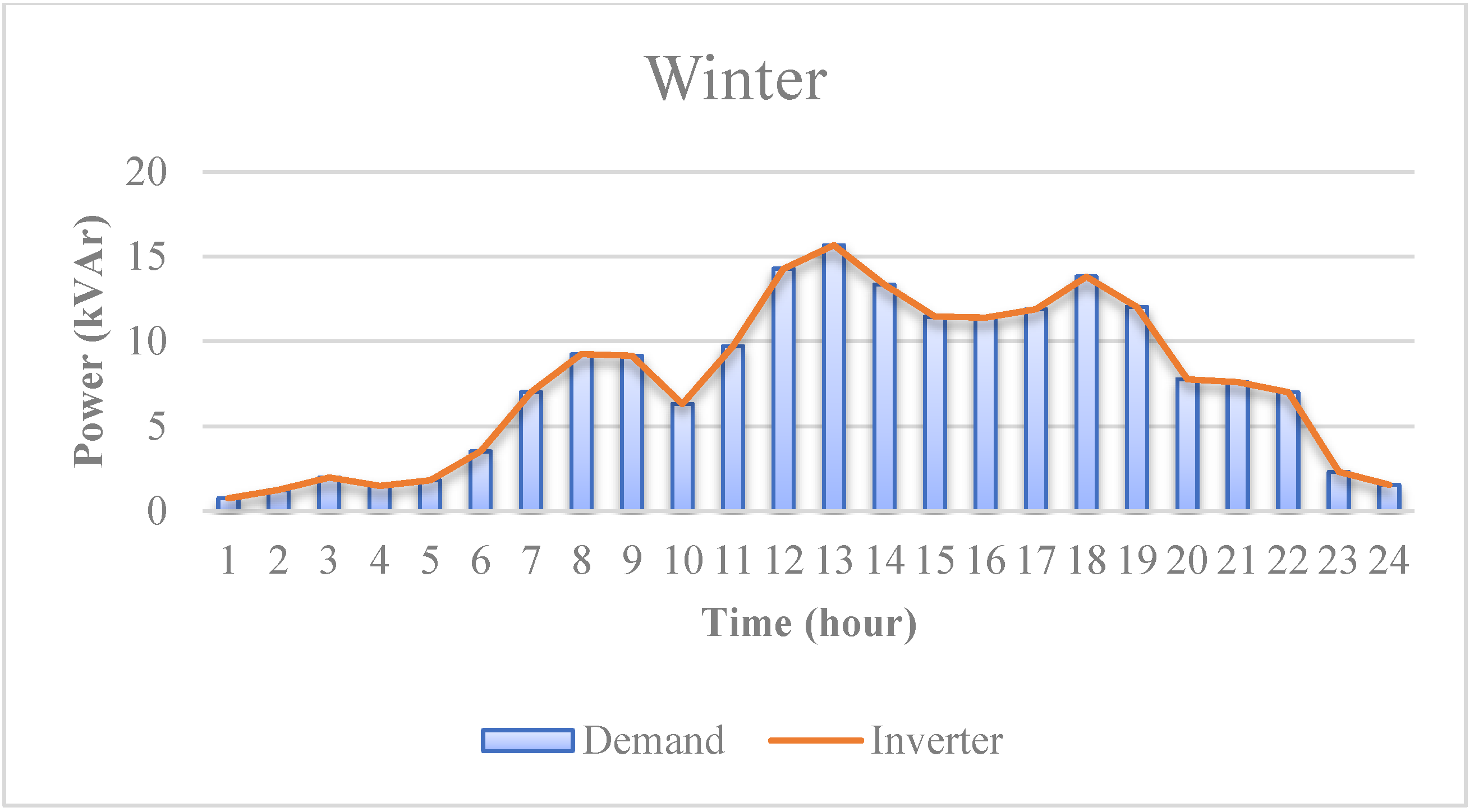

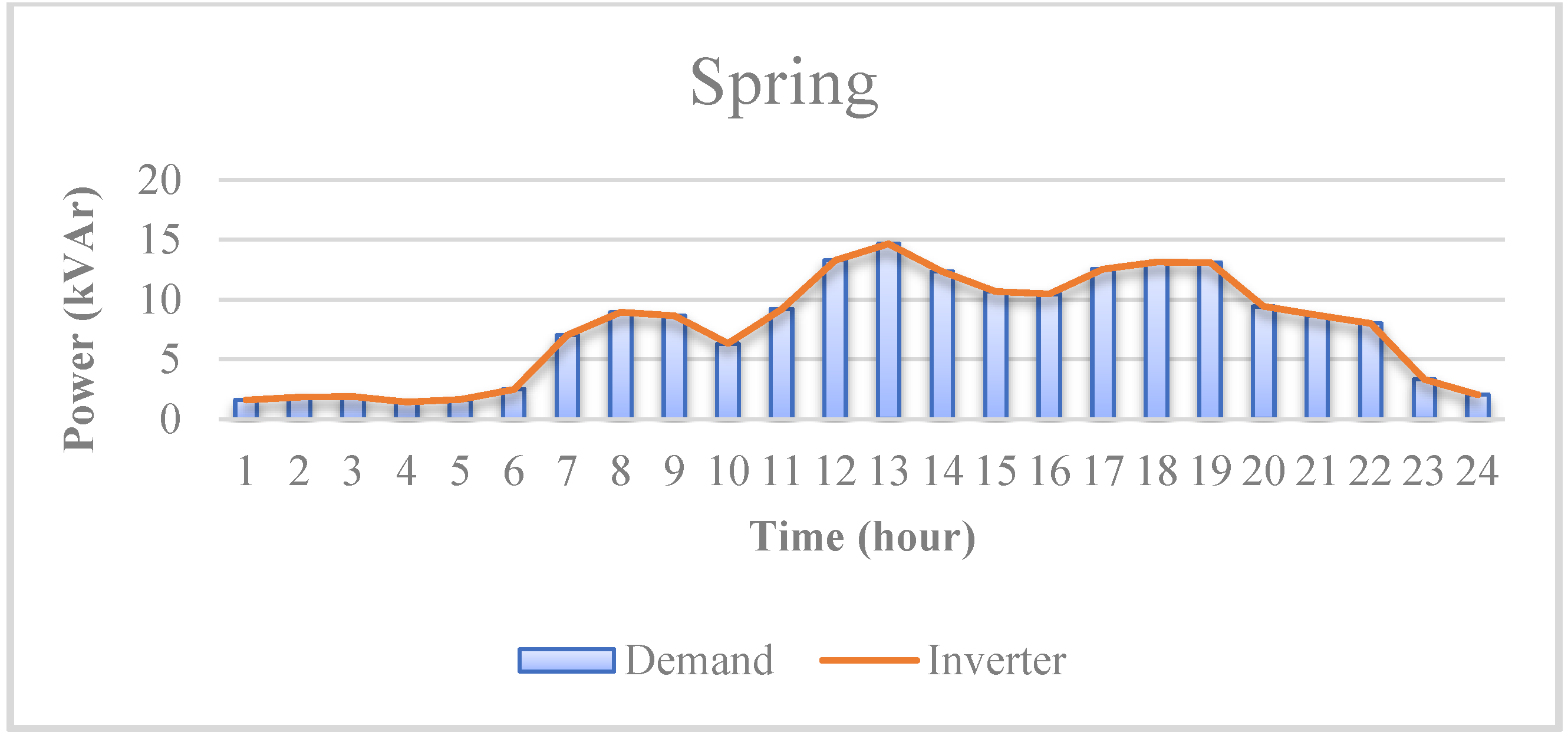
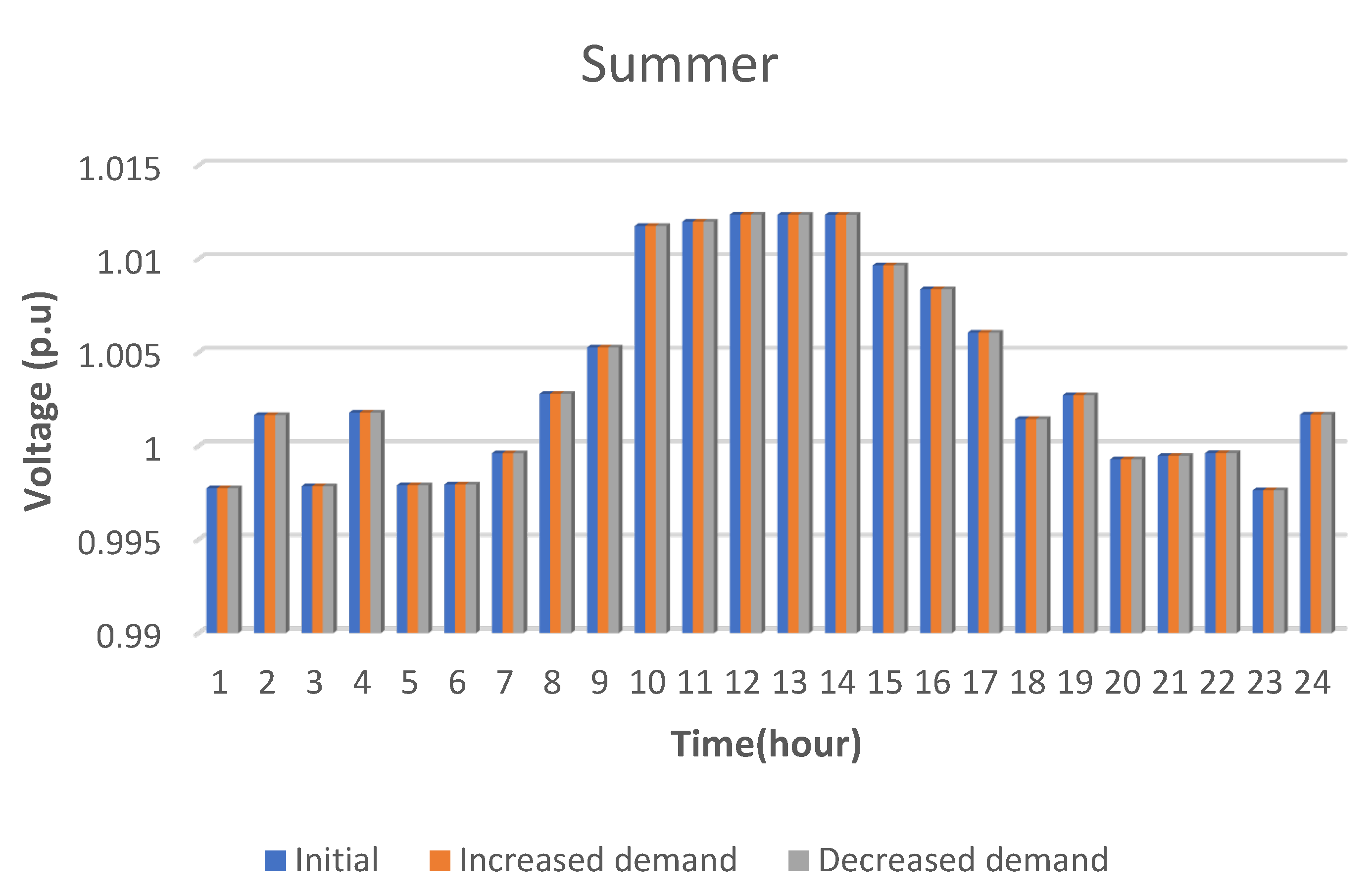

| Ref. # | DR | PVs | Energy Storage | Heat Pump | Electricity Market | Detailed Modelling | Gamified DR | WA Context |
|---|---|---|---|---|---|---|---|---|
| [19] | × | √ | × | × | √ | √ | × | × |
| [20] | √ | √ | √ | √ | √ | × | × | × |
| [21] | √ | √ | √ | × | √ | × | × | × |
| [22] | √ | √ | √ | √ | × | × | × | × |
| [23] | √ | √ | √ | × | √ | × | × | × |
| [24] | × | √ | × | × | √ | √ | × | × |
| [25] | √ | √ | √ | √ | √ | × | × | × |
| [26] | √ | √ | √ | × | √ | × | × | × |
| [11] | √ | √ | √ | √ | √ | × | × | × |
| [27] | √ | √ | √ | × | √ | √ | × | × |
| [28] | √ | √ | √ | × | √ | × | × | × |
| [29] | √ | √ | √ | √ | × | √ | × | × |
| [30] | × | √ | √ | × | × | √ | × | × |
| [31] | × | √ | √ | × | √ | √ | × | √ |
| GFL Inverters | GFM Inverters |
|---|---|
| Current-based inverters | Voltage-based inverters |
| Phase angle and current regulation. | Regulating the voltage’s frequency and amplitude |
| Conforming to network | Tweaking the network’s voltage and frequency |
| The management of both active and reactive powers | Immediate load balancing |
| - | Functioning with a weak grid and in islanding mode |
| - | System inertia is supported by this |
| - | Ability to start in black box |
| PV size | 810 kW |
| Inverter size | 1 MVA |
| Battery size | 500 kWh |
| Forecasted values of PV | Provided in Figure 7 |
| Energy price | Provided in Figure 8 |
| Forecasted load | Provided in Figure 9 |
| Seasons | Summer | Fall | Winter | Spring |
|---|---|---|---|---|
| Summation of Profit over day ($/day) | 118.7 | 118.2 | 115.9 | 115.6 |
Publisher’s Note: MDPI stays neutral with regard to jurisdictional claims in published maps and institutional affiliations. |
© 2022 by the authors. Licensee MDPI, Basel, Switzerland. This article is an open access article distributed under the terms and conditions of the Creative Commons Attribution (CC BY) license (https://creativecommons.org/licenses/by/4.0/).
Share and Cite
Gholami, K.; Behi, B.; Arefi, A.; Jennings, P. Grid-Forming Virtual Power Plants: Concepts, Technologies and Advantages. Energies 2022, 15, 9049. https://doi.org/10.3390/en15239049
Gholami K, Behi B, Arefi A, Jennings P. Grid-Forming Virtual Power Plants: Concepts, Technologies and Advantages. Energies. 2022; 15(23):9049. https://doi.org/10.3390/en15239049
Chicago/Turabian StyleGholami, Khalil, Behnaz Behi, Ali Arefi, and Philip Jennings. 2022. "Grid-Forming Virtual Power Plants: Concepts, Technologies and Advantages" Energies 15, no. 23: 9049. https://doi.org/10.3390/en15239049
APA StyleGholami, K., Behi, B., Arefi, A., & Jennings, P. (2022). Grid-Forming Virtual Power Plants: Concepts, Technologies and Advantages. Energies, 15(23), 9049. https://doi.org/10.3390/en15239049







